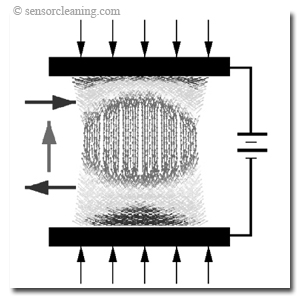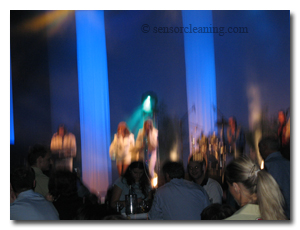DSLR Special Features
Anti-Dust Features

Most new digital SLR cameras incorporate some method of preventing dust accumulation on the low pass filter. This is usually in the form of an antistatic coating that is placed on the top layer of the filter, passively repelling dust that is in the chamber area. But unfortunately this does not prevent all dust from landing on the filter.
Many digital SLR manufacturers are now including a special technology where the dust is ‘shaken’ off of the filter by a piezoelectric current. This charge produces ultrasonic vibrations that quaver the filter and send the dust to a special catch tray. Different manufacturers have set different times at which this process is run. Some run at startup, some at shutdown and some at both. You can also manually choose to run the shake feature by accessing it in the menu.
As a third line of defense, some manufacturers have special software built into the camera where it maps the position of the dust which in turn can be used later to process out the dust in a picture. The user takes a test picture, according to the manual, and enables the mapping feature. This map is then added to each image taken after and can be utilized to augment the image further. Unfortunately, the manufacturers sometimes use proprietary software to implement this feature which does limit usability somewhat.
Anti-Shake Technology

Minolta Konica was the first to pioneer this technology in a digital SLR when they released their Maxxum 7D camera. Labeled as their ‘Body Integral Anti-Shake Technology and CCD Shift Mechanism,’ Minolta Konica developed a system where the CCD sensor shifts to compensate for motion. A built-in motion sensor ascertains the camera shake and sends information about the angle and speed of motion to a microprocessor. Along with other pieces of information such as focal length, f-stop, and focused distance, calculations are made and the sensor is shifted to reduce motion blur while not having to use a higher ISO, which may lead to grainier images. Today many manufacturers have employed this technology into their cameras, effectively reducing blur and allowing photographers to shoot at 2 – 4 steps (f-stops) slower than without it. This helps when taking pictures of moving objects at low lighting, while using long focal lengths, or very short ones (macro).
Imaging Stabilization lenses provide another solution to the motion blur problem and may be better suited towards ones needs. These special types of lenses contain gyro sensors that measure the pitch and yaw of the lens and adjust a special image stabilization lens group to help keep the image in focus.
A general rule of thumb was that one should never use a shutter speed slower than the reciprocal of the focal length of your lens. I.E. if your lens is 60mm you shouldn’t use a shutter speed slower than 1/60s. With anti-shake technologies, it is possible to take them down a few steps further (1/15s).
| In-Lens Anti-Shake | ||
| advantages: | disadvantages | |
| more effective with larger lenses | more expensive, especially for every lens | |
| only pay for what you need | not available for all lenses | |
| see stabilization effects through viewfinder | ||
| In-Camera Anti-Shake | ||
| advantages: | disadvantages | |
| works with all lenses | increasingly less effective with larger lenses | |
| less expensive | increasingly hard to implement with larger sensors | |
